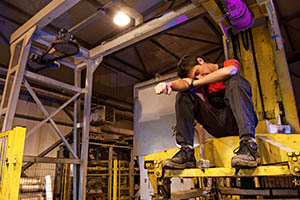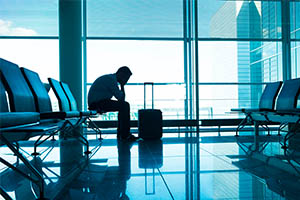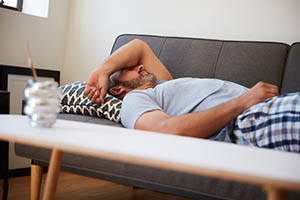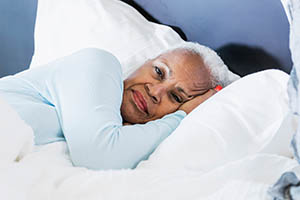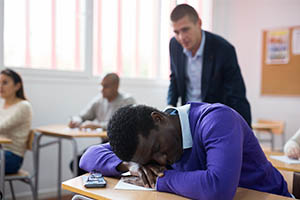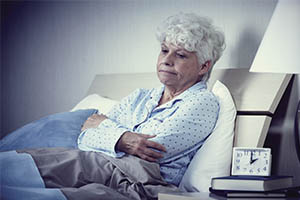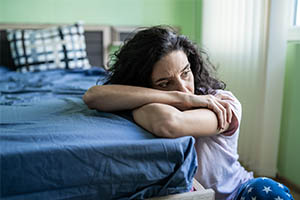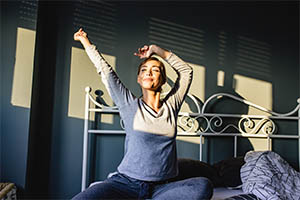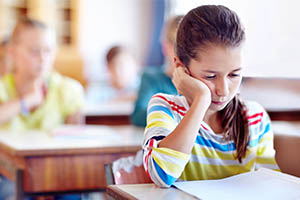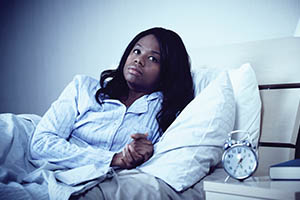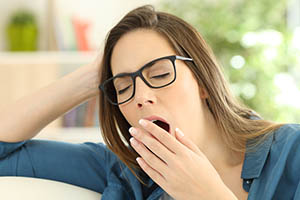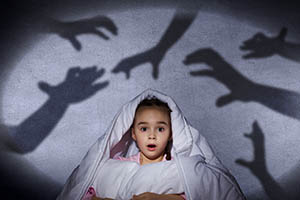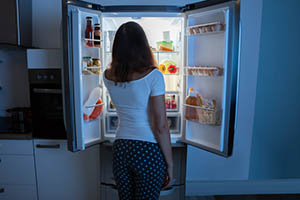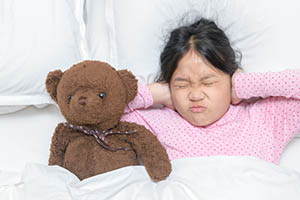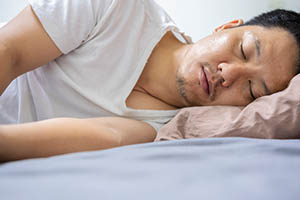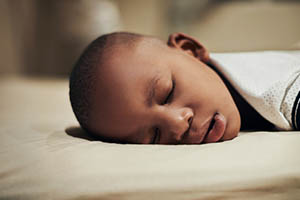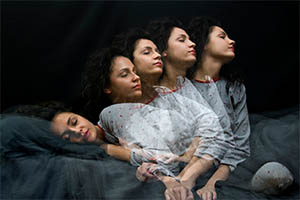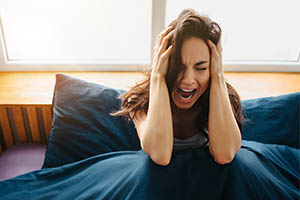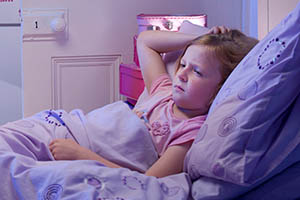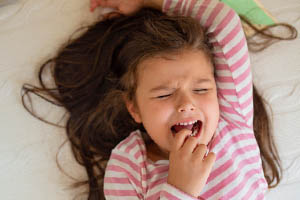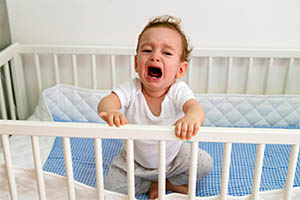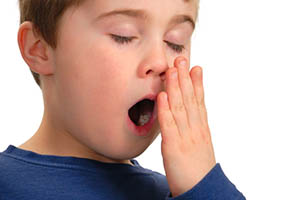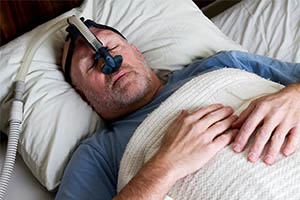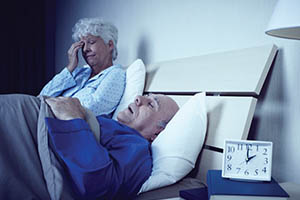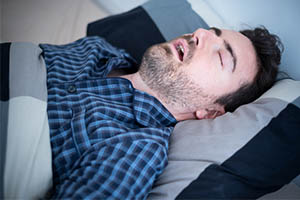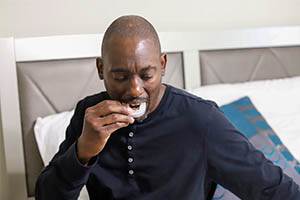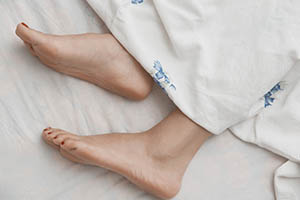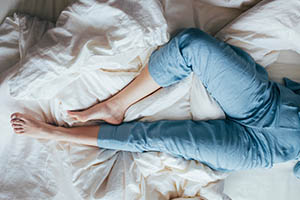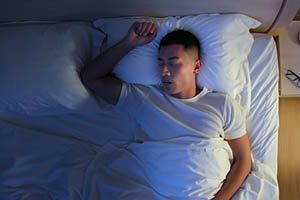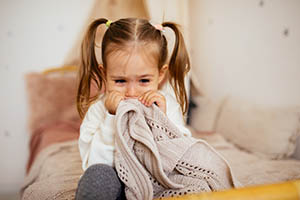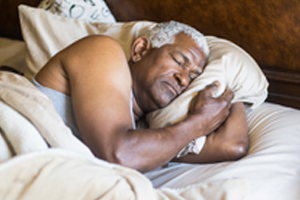Sleep Disorders

There are a variety of sleep disorders. Some are common, like insomnia, while others are rare. About 70 million people experience sleep disorders each year. Practice healthy sleep habits to promote restful sleep every night, and talk to your doctor if your sleep problem persists. Learn more about the variety of sleep disorders below.
Circadian Rhythm Sleep-Wake Disorders
Conditions in which the sleep times are out of alignment. A patient with one of these disorders does not follow the normal sleep times at night.
Shift Work
A non-traditional work schedule involving shifts that occur when most people are asleep can cause shift work disorder.
Jet Lag
Jet lag occurs when you travel across multiple time zones and have difficulty adjusting to the new schedule.
Irregular Sleep-Wake Rhythm
This disorder causes a person’s circadian rhythms to be so disorganized that there is no clear sleep or wake pattern.
Delayed Sleep-Wake Phase
This circadian rhythm disorder is a sleep pattern that is delayed by two or more hours.
Advanced Sleep-Wake Phase
This circadian disorder causes people to fall asleep before a normal bedtime and wake up earlier.
Non-24 Sleep-Wake Rhythm
Non-24 is a sleep disorder that causes a person’s sleep time to shift a little later every day.
Insomnia
There are a variety of sleep disorders that are classified as a form of insomnia. This type of sleep disorder involves the inability to fall asleep or stay asleep.
Insomnia
This disorder occurs when you have trouble falling asleep, staying asleep or do not feel refreshed in the morning.
Short Sleeper
A small percentage of adults are short sleepers, they feel alert and refreshed after sleeping less than 6 hours per night.
Child Insomnia
Many children have trouble falling asleep or staying asleep throughout the night.
Hypersomnias (or Excessive Sleepiness)
Hypersomnias are a group of sleep disorders that causes a person to be excessively sleepy. People with a hypersomnia may fall asleep at times that are inconvenient or even dangerous, such as at work or while driving.
Insufficient Sleep Syndrome
Insufficient sleep syndrome occurs when you regularly fail to get enough sleep at night and the result is sleep deprivation.
Narcolepsy
This sleep disorder makes you feel overwhelmingly tired and has the potential for uncontrollable sleep attacks.
Long Sleeper
Long sleepers regularly sleep much longer than other members of their age groups.
Kleine-Levin Syndrome
This sleep disorder involves recurrent episodes of excessive sleepiness and sleep duration.
Idiopathic Hypersomnia
This sleep disorder involves daily periods of an irrepressible need to sleep.
Parasomnias (or Sleep Events)
Parasomnias are a group of sleep disorders that involve unwanted events or experiences that occur while you are falling asleep, sleeping or waking up.
Nightmares
Frequent nightmares that prevent you from getting a good night’s sleep are considered a sleep disorder.
Sleep Eating Disorder
These episodes occur when you rapidly binge eat while you are only partially awake.
Sleep Hallucinations
Sleep related hallucinations are imagined events that seem very real.
Sleep Paralysis
Sleep paralysis causes you to be unable to move your body when you are falling asleep or when you are waking up.
Sleep Talking
Sleep talking can occur by itself or it may also be a feature of another sleep disorder.
Sleep Terrors
Sleep terrors (or night terrors) cause you to wake up in intense fear with barely any memory, if any, of a terrifying dream.
Sleepwalking
Sleepwalking involves getting up from bed and walking around when you are still asleep.
REM Sleep Behavior Disorder
This potentially dangerous sleep disorder causes you to act out vivid dreams as you sleep.
Exploding Head Syndrome
This parasomnia causes you to hear a loud imaginary noise just before you fall asleep or awaken.
Confusional Arousals
This parasomnia causes you to act in a very strange and confused way as you wake up or just after waking.
Bedwetting
Bedwetting can occur as a primary or secondary condition in both adults and children.
Sleep-Related Breathing Disorders
Sleep disorders that involve difficulty breathing during sleep are classified as sleep-related breathing disorders. Obstructive sleep apnea is the most common disorder of this type, however there are a number of variations of sleep apnea.
Infant Sleep Apnea
Sleep apnea in infants may be due to a developmental problem or it may be caused by another medical condition.
Child Sleep Apnea
About two percent of young children have obstructive sleep apnea that requires treatment.
Central Sleep Apnea
Central sleep apnea causes your body to decrease or stop breathing during sleep in an off-and-on cycle.
Groaning
Catathrenia occurs when you make a prolonged sound that resembles groaning while you exhale during sleep.
Snoring
This loud noise occurs as you sleep when the flow of air from breathing makes the tissues in the back of your throat vibrate.
Obstructive Sleep Apnea
Untreated obstructive sleep apnea causes you to stop breathing during sleep because of obstructions in the airway.
Sleep-Related Movement Disorders
This classification of sleep disorders includes conditions that cause movement during or prior to sleep. These disorders can make it difficult to fall asleep or stay asleep, or to get restful sleep.
Bruxism
This sleep movement disorder involves the grinding or clenching of teeth during sleep.
Sleep Leg Cramps
Sleep related leg cramps are sudden and intense feelings of pain in the leg or foot.
Restless Legs Syndrome
This sleep disorder causes a burning or itching inside your legs when you lie down.
Periodic Limb Movements
This sleep movement disorder involves a series of uncontrollable repetitive muscle movements that disrupt your sleep.
Sleep Rhythmic Movement
Sleep rhythmic movement disorder involves repeated body movements that occur while drowsy or asleep.
Sleep Starts
Sleep starts are also known as hypnic or hypnagogic jerks. They are sudden, brief, and strong contractions of the body.

